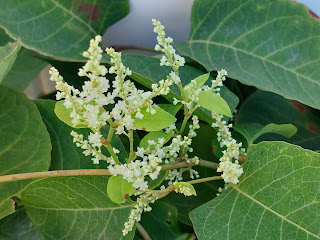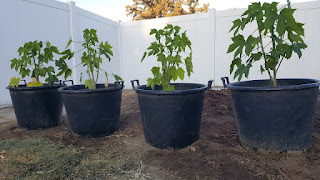Reynoutria japonica) Japanese knotweed.
(Reynoutria japonica) commonly called Japanese knotweed. It is native to East Asia in Japan, China and Korea. Some Khmers called it ត្រកួនជូរ / DrawGuon Jew. Tge name is in reference to its sour taste, the Hollow and segmented stems.
Synonyms: Fallopia japonica, Polygonum cuspidatum, is a species of herbaceous perennial in the knotweed and buckwheat family Polygonaceae.
I grew up eating it in traditional Khmer cooking. Great for any sour dishes, and because of its natural sour tastes there's no need for the use of a sour agent.
- Japanese knotweed is a super cold-hardy plant with root systems will reach very, very deep beneath soil surface. Underground rhizomes stays dormant in cold winter. And young shoots emerges and spread rampantly and wildly in spring.
- Pot planting is highly encouraged. Elevate your growing pot above soil surface to create an empty space to allow airflow, to keep root systems to air-pruning itself and not to grow out.
- DO NOT deposit or dispose any live scraps into any city bins heading for landfill. Because, even small live particles of any part of the mature slaks with nodes will take roots and grow a new plant and spread when buried.
- To ensure 100% control, chop into a manageable size, boil, Let age, and is a free of charge fertilizer.
 |
| ដាំនៅក្នុងធុងបណ្តុះកូន |












Comments
Post a Comment